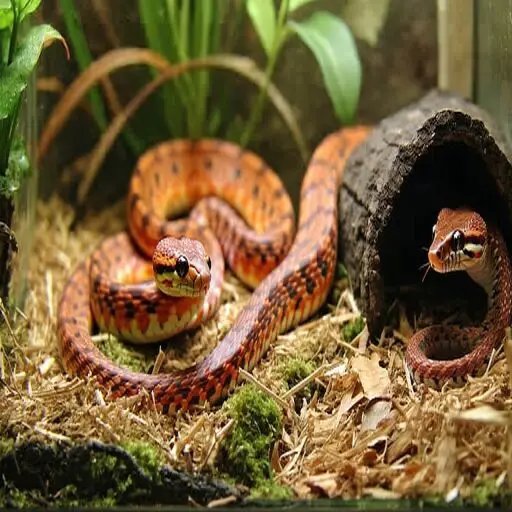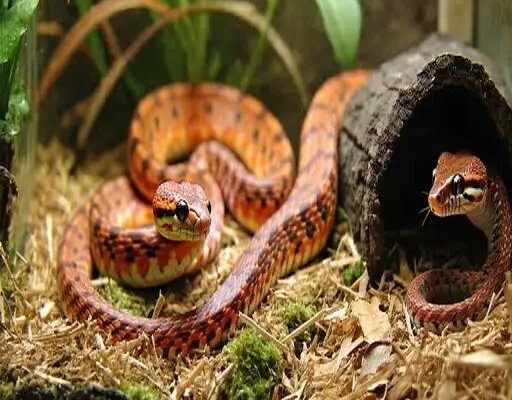
Being a pet owner comes with a lot of responsibility. Corn snakes, with their vibrant colors and gentle demeanor, make wonderful pets. However, just like a car needs regular maintenance, your snake needs a comfortable environment and proper care. So what are those signs of stress, and how can you help your scaly buddy? Let’s dive in!
Recognizing Stress Signals in Corn Snakes
Stress in corn snakes can manifest in various behaviors, and the first step to helping them is recognizing those signs. You might notice your snake acting differently than usual, and here’s what to look for.
Changes in Appetite
One of the most noticeable signs of stress is a change in your snake’s eating habits. If your corn snake suddenly refuses food or seems disinterested in meals it usually devours, that could be a red flag. A stressed-out snake might eat less or stop eating altogether, which can lead to health issues over time.
Consider paying attention to the timing of these changes as well. Did they coincide with a new pet in the house, a change in temperature, or increased handling? If your corn snake is skipping meals, it’s time to investigate further.
Increased Hiding Behavior
Corn snakes often seek shelter when they’re feeling anxious. If your once-outgoing pet starts to hide more than usual, that could indicate stress. It’s like when we curl up in a blanket on a rough day; snakes also want to feel safe and secure.
Check their habitat to ensure it has enough hiding spots. A good hide box can help them feel more at ease. Make sure they have options—both tight spaces and more open areas to explore when they feel comfortable.
Physical Signs of Stress in Corn Snakes
Sometimes, stress can show up physically. Keeping an eye on your snake’s appearance can help you catch any issues early.
Body Posture and Movement
How your corn snake moves can tell you a lot. If you notice them moving in a jerky or erratic manner, it’s likely they’re feeling stressed. Healthy corn snakes usually glide smoothly; if they seem all over the place, something might be bothering them.
You might also see them flattening their bodies or coiling tightly. This is a defensive posture, indicating they feel threatened. If they seem to be constantly on edge, it’s crucial to evaluate their environment and handling.
Skin Shedding Issues
Stress can affect how often and effectively your corn snake sheds its skin. If you notice incomplete sheds or retained skin (especially around the eyes and tail), that could signal underlying stress. Uneven shedding can lead to other health problems, so it’s something to take seriously.
Ensuring proper humidity levels in their habitat can help with shedding. If you’ve made any recent changes to their environment, consider reverting them back to see if it improves the situation.
Environmental Factors Contributing to Stress
Your corn snake’s home sweet home has a significant impact on its well-being. If their environment isn’t just right, it can lead to stress.
Temperature Fluctuations
Corn snakes are ectothermic, meaning they rely on external sources for warmth. If the temperature in their habitat fluctuates too much, they may become stressed. The ideal temperature gradient should be around 75°F on the cool side and 85°F on the warm side.
Investing in a good thermometer and heater can help you maintain these temperatures effectively. Remember, if they’re too cold or too hot, your corn snake will be uncomfortable!
Noise and Activity Levels
Believe it or not, your snake can pick up on noises around them. If you have a lot of activity in their area—like loud music, barking dogs, or children playing—that can create an environment that feels unsafe.
Consider providing a quieter space for your corn snake if you notice them acting skittish. Creating a calm environment can greatly reduce their stress levels.
How to Help a Stressed Corn Snake
The good news is that you can take steps to help calm your corn snake down. It’s all about creating a supportive environment and being aware of their needs.
Assess and Adjust the Habitat
Start by reviewing your corn snake’s habitat. Are there enough hiding spots? Is the temperature stable? Making adjustments to their living space can often lead to quick improvements.
Consider adding more plants, décor, or different types of hides. This gives them various places to explore and retreat, helping them feel more secure.
Minimize Handling
While it’s tempting to show off your snake to friends, consider limiting handling if you notice signs of stress. Allow your corn snake some time to feel secure in its environment before resuming regular handling.
Let them come to you when they’re ready. Gently interacting on their terms can go a long way to building trust.
Consulting a Vet
Sometimes, stress can be linked to underlying health issues. If you’ve tried adjusting their habitat and limiting handling but your corn snake is still showing signs of stress, it might be time to consult a vet.
Health Assessment
A vet can help identify any possible health concerns that might be causing stress. They can check for issues like parasites, respiratory problems, or even injuries that may not be immediately visible.
Regular check-ups are a good practice to ensure your corn snake stays healthy. Just like us, they feel better when they’re physically well!
Expert Advice
If you’re feeling uncertain about what’s best for your snake, do not hesitate to ask for help. Experienced reptile vets can guide you on best practices for care and help you create a stress-free environment for your pet.
Creating a Peaceful Atmosphere
At the end of the day, creating a calm environment for your corn snake can make all the difference. Think of it like finding the right vibe for a cozy night in.
Routine and Stability
Just like humans thrive on routine, your corn snake will benefit from a consistent schedule for feeding, cleaning, and handling. Keeping a steady routine can reduce anxiety and help them feel secure.
Be Patient and Observant
Remember that every snake is different. It may take time to understand your corn snake’s unique personality and needs. Be patient, watch for changes, and respond to their cues.
Whether you’re a new pet owner or an experienced handler, paying attention to your corn snake’s stress signals is crucial. Understanding these signs not only fosters a better relationship but also ensures a happier, healthier snake.
By making small adjustments and monitoring their environment, you can create a peaceful haven for your scaly friend. And that, my friend, is the ultimate goal—happy snakes, happy owners!

